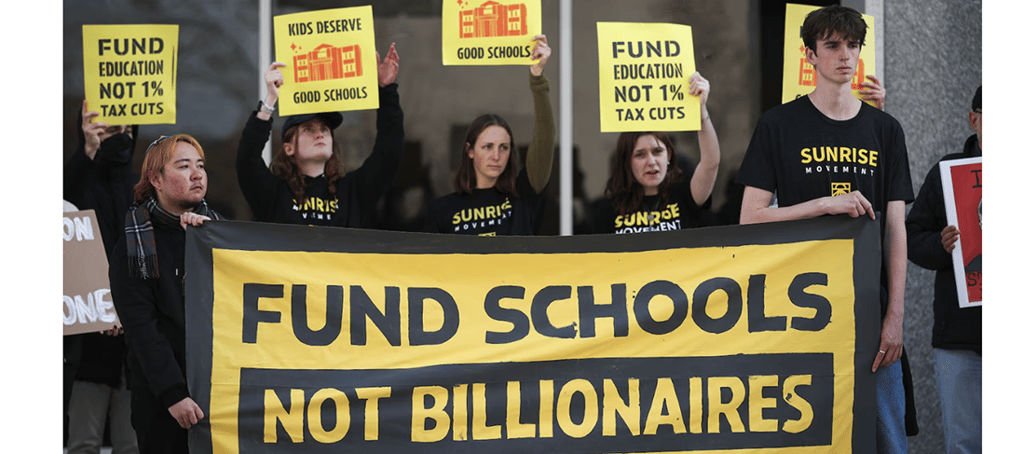Teachers Under Pressure: How Budget Cuts and Policy Shifts Threaten Education in 2025
Teachers Under Pressure: How Budget Cuts and Policy Shifts Threaten Education in 2025, education budget cuts 2025
4/19/2025


Teachers Under Pressure: How Budget Cuts and Policy Shifts Threaten Education in 2025
On April 18, 2025, the U.S. education system is teetering on the edge of a crisis. With 55,000 vacant teaching positions reported in 2024 (NPR, April 7, 2025) and Elon Musk’s Department of Government Efficiency (DOGE) proposing $150 billion in federal budget cuts, schools are bracing for a storm. For Boncopia readers, this isn’t just about classrooms—it’s a threat to jobs, social values, and the future of education. As Trump’s policy shifts push for school choice and reduced federal oversight, teachers are under unprecedented pressure. Will the education system survive 2025, or are we on the brink of a collapse that could reshape learning for generations?
The Budget Cut Threat: A Looming Disaster for Schools
Elon Musk, co-leading DOGE alongside Vivek Ramaswamy, has made waves with his plan to slash $150 billion from the federal budget in FY2026 (Reuters, March 26, 2025). The Department of Education, already strained, is a prime target. Musk has accused the department of “funding anti-Americanism, gender nonsense, and anti-meritocratic racism,” advocating for cuts that could eliminate critical programs (Newsweek, February 14, 2025). While some waste may exist, the proposed reductions threaten to gut essential resources like teacher training, special education, and data collection, vital for understanding student needs (Newsweek, February 14, 2025).
The impact on schools could be catastrophic. Fewer resources mean larger class sizes, with some districts already projecting ratios of 40 students per teacher—a 25% increase from 2024 averages (Edunomics Lab, Georgetown University, March 26, 2024). Teacher layoffs are also on the horizon. In Massachusetts, the Public Schools of Brookline proposed cutting elementary foreign language teachers and literacy coaches to close a $2.2 million gap (K-12 Dive, March 26, 2024). Portland Public Schools in Oregon face a $30 million deficit, with half the cuts hitting school-level staff (K-12 Dive, March 26, 2024). For Boncopia readers focused on jobs, this means thousands of educators, already stretched thin, could be out of work by fall 2025.
Policy Shifts and Teacher Morale: A System Under Strain
Beyond budget cuts, Trump’s education policies are adding fuel to the fire. On January 29, 2025, Trump signed an executive order expanding school choice, redirecting federal funds to voucher programs that allow parents to use public money for private schools, including faith-based ones (Governing, February 25, 2025). This move, paired with reduced federal oversight, aims to “empower parents,” but critics argue it undermines public education. By diverting funds, public schools lose resources, exacerbating the impact of DOGE cuts. In states like Florida, voucher programs have already drained $1.3 billion from public school budgets since 2023 (Education Week, March 10, 2025).
Teacher morale is at an all-time low. A 2025 National Education Association survey found that 62% of teachers are considering leaving the profession due to burnout, low pay, and policy uncertainty—up from 55% in 2023 (NEA, April 10, 2025). Trump’s push for “patriotic education,” which emphasizes American history while deprioritizing subjects like social studies and arts, has also sparked backlash. On X, educators like
@TeacherVoice, lament, “We’re losing our ability to teach critical thinking—kids deserve better” (April 15, 2025). For Boncopia readers interested in social values, this raises concerns about the erosion of a well-rounded education.
The Ripple Effects: Jobs, Equity, and the Future
The combined impact of budget cuts and policy shifts threatens more than just schools—it’s a crisis for jobs and equity. Layoffs and teacher shortages disproportionately affect low-income districts, where 70% of vacant positions remain unfilled (NPR, April 7, 2025). This widens the achievement gap, as students in underfunded schools—often students of color—lose access to experienced educators and support services like counseling. A 2024 study by the Learning Policy Institute found that high teacher turnover costs districts $2.2 billion annually, further straining budgets (LPI, September 2024).
For parents and communities...
hello@boncopia.com
+13286036419
© 2025. All rights reserved.